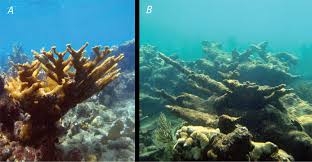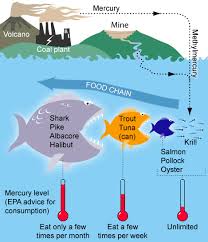Article: The 7 Biggest Threats to Our Oceans: Threat #7: Ocean Acidification

The 7 Biggest Threats to Our Oceans: Threat #7: Ocean Acidification
Did you know that our oceans not only act as a filter for the underwater environment, but that they also serve as a filter for the air we breathe here on land? In fact, our oceans absorb almost 30 percent of the carbon dioxide within the Earth’s atmosphere.
On the plus side, this has benefited us by slowing down the climate change that would be occurring much more rapidly had these emissions remained in the air. On the down side, new research is finding that the introduction of massive amounts of CO2 into the ocean is altering seawater chemistry and affecting the life cycles of many marine organisms.
Since the beginning of the industrial revolution, fossil fuel-powered machines have driven an unprecedented rise of human industry and advancement. The unfortunate consequence however, has been the emission of billions of tons of carbon dioxide and other harmful greenhouse gasses into our atmosphere. The rising amount of these toxic emissions have become more than our oceans can healthfully absorb, resulting in a change within the oceans sensitive chemistry, making it more acidic. It is estimated that the current rate of change in the ocean’s pH is 100 times faster than any time in the Earth’s history.
As carbon dioxide dissolves in the seawater, carbonic acid is formed. This leads to higher acidity, especially near the surface of the ocean. Carbonate ions are displaced and their quantities become scarce for the marine creatures who depend on them to build their shells and skeletons. These “marine calcifiers”  include corals, mussels, oysters, clams, plankton, and the tiny plants and animals that play a vital role in our oceans ecosystems.
include corals, mussels, oysters, clams, plankton, and the tiny plants and animals that play a vital role in our oceans ecosystems.
The higher concentration of acidity has been proven to inhibit shell growth in these animals and is a suspected cause in reproductive orders in some species of fish. If this trend continues, several species of these creatures will be gravely affected.
Equally worrisome is the fact that as the oceans continue to absorb more CO2, their capacity as a carbon storehouse could diminish. That means more of the carbon dioxide we emit will remain in the atmosphere, further aggravating global climate change.
There are simple, everyday efforts you can take to help offset your CO2 footprint and counteract the amount of CO2 that is absorbed by our oceans.
1 - When possible, walk or ride your bike to avoid generating emissions. Carpooling and public transportation also help drastically reduce CO2 emissions.
2 - Replace incandescent light bulbs with LED light bulbs, and flip the switch when you leave the room.
3 - Add solar panels to the roof of your home. While these can be an investment, in some cases you can actually eliminate your electricity bill or even earn cash by selling electricity back to the grid!
4 - Reduce, reuse, recycle.
5 - Buy and eat local. It has been estimated that 13% of all greenhouse gas emissions result from the production and transport of food. Try and buy organic whenever possible. Better for you, better for the planet.
The only truly effective way to combat ocean acidification, is to lower our greenhouse emissions and carbon foot print. By seeking alternative forms of energy sources, such as solar and wind power, and decreasing the burning of fossil fuels, and offshore drilling, we can help put an end to what could be an irreversible, devastating change in our oceans.





Leave a comment
This site is protected by hCaptcha and the hCaptcha Privacy Policy and Terms of Service apply.